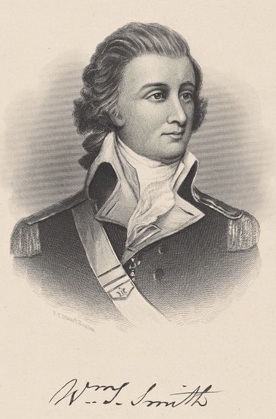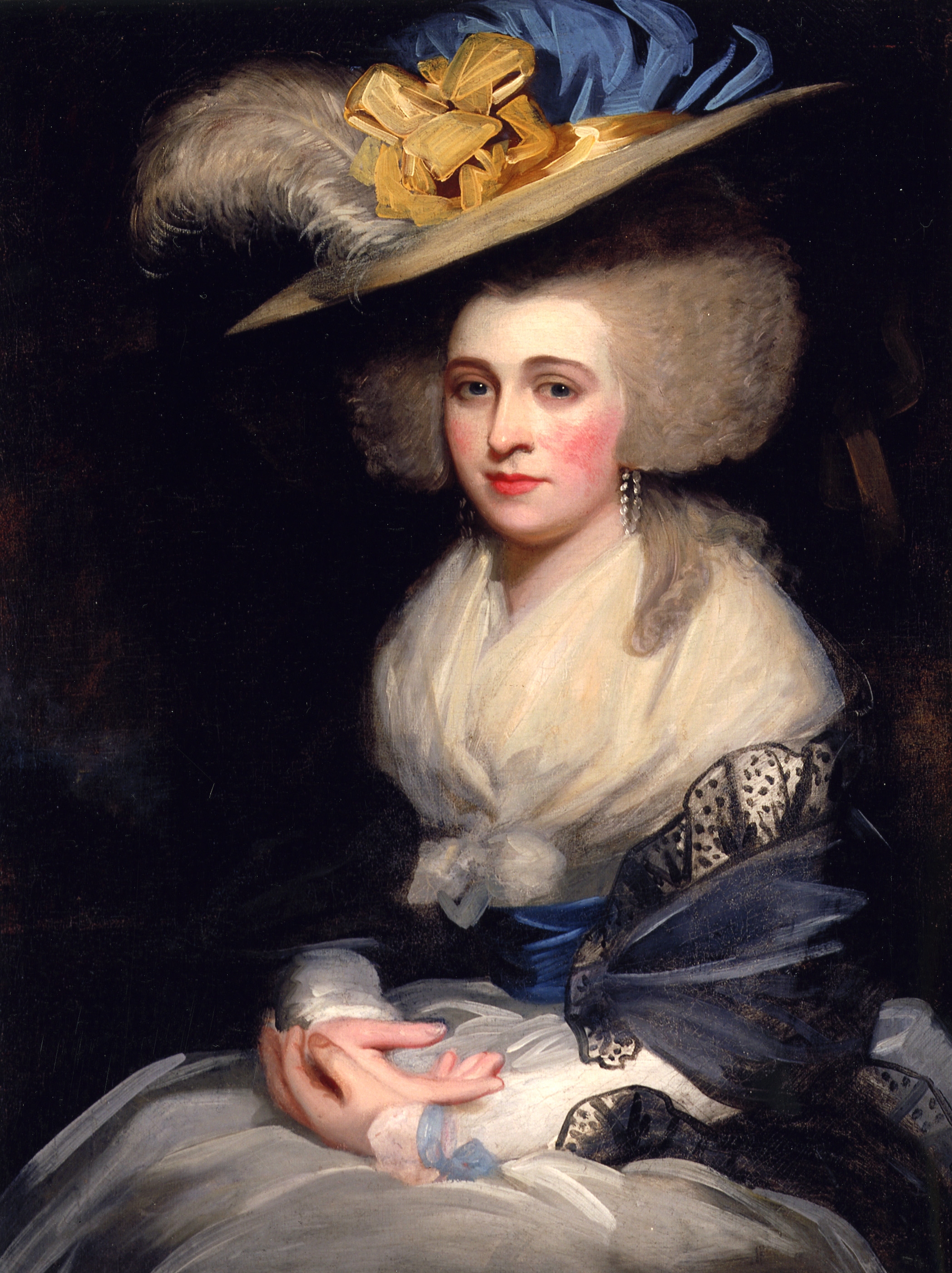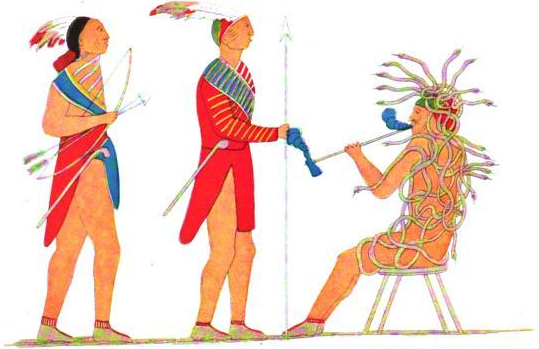|
Samuel Ogden
Colonel Samuel Ogden (December 9, 1746 — December 1, 1810) was a colonial businessman in New Jersey who had an iron works. He fought on the winning side during the American Revolutionary War. Afterward, he became a developer and land speculator for a large tract of land in upstate New York. He worked with his brother Abraham Ogden, brother-in-law Gouverneur Morris, and others on developing this tract. The City of Ogdensburg, New York, at the confluence of the Oswegatchie with the St. Lawrence River, was named for him. Early life Samuel Ogden was born in 1746 in Newark, New Jersey, one of five sons of David Ogden (1707—) and Gertrude ( née Gouverneur) Ogden (1716—1775). His father was a noted jurist and a member of the supreme court for the royal Province of New Jersey before the Revolutionary War. Among his siblings were Sarah (née Ogden) Hoffman (who married Nicholas Hoffman and was the mother of Josiah Ogden Hoffman); Abraham Ogden (who married Sarah Frances Ludlow); C ... [...More Info...] [...Related Items...] OR: [Wikipedia] [Google] [Baidu] |
Newark, New Jersey
Newark ( , ) is the most populous city in the U.S. state of New Jersey and the seat of Essex County and the second largest city within the New York metropolitan area.New Jersey County Map New Jersey Department of State. Accessed July 10, 2017. The city had a population of 311,549 as of the , and was calculated at 307,220 by the Population Estimates Program for 2021, making it [...More Info...] [...Related Items...] OR: [Wikipedia] [Google] [Baidu] |
Abraham Gouverneur
Abraham Gouverneur (1671 – June 16, 1740) was a Dutch born colonial American merchant and Leislerian politician who served as the Speaker of the New York General Assembly. Early life Gouverneur was born in 1671 "upon the Single, near the Konings Pleyn" in Amsterdam, the Netherlands. He later moved to New York City in what was then the Province of New York, a part of British America. He was the son of Nicolas Gouverneur (d. 1682) and Maghteld ( née de Riemer) Gouverneur (1644–1721). He was the brother of Elisabeth Gouverneur, Isaac Gouverneur, and Elisabeth Gouverneur. After the death of his father in 1682, his mother remarried to Jasper Nissepadt (Nesbitt), and had another child, Jannetje Nissepadt. Career Gouverneur, a successful merchant, was involved in the organization of Harlem in upper Manhattan, and received land known as the Abraham Gouverneur Patent that he purchased in February 1713. Along with fellow merchant Nicholas Stuyvesant (son of Peter Stuyvesant, ... [...More Info...] [...Related Items...] OR: [Wikipedia] [Google] [Baidu] |
Neutrality Act Of 1794
The Neutrality Act of 1794 was a United States law which made it illegal for a United States citizen to wage war against any country at peace with the United States. The Act declares in part: If any person shall within the territory or jurisdiction of the United States begin or set on foot or provide or prepare the means for any military expedition or enterprise ... against the territory or dominions of any foreign prince or state of whom the United States was at peace that person would be guilty of a misdemeanor. The act also forbade foreign war vessels to outfit in American waters and set a three-mile territorial limit at sea. The act was repealed and replaced several times while also being amended and a similar statute is in force as . Origins and evolution One reason for the act was to create a liability for violation of Section 8 of Article One of the United States Constitution, which reserves to the United States Congress the power to decide to go to war. The Continent ... [...More Info...] [...Related Items...] OR: [Wikipedia] [Google] [Baidu] |
Death By Hanging
Hanging is the suspension of a person by a noose or ligature around the neck.Oxford English Dictionary, 2nd ed. Hanging as method of execution is unknown, as method of suicide from 1325. The ''Oxford English Dictionary'' states that hanging in this sense is "specifically to put to death by suspension by the neck", though it formerly also referred to crucifixion and death by impalement in which the body would remain "hanging". Hanging has been a common method of capital punishment since medieval times, and is the primary execution method in numerous countries and regions. The first known account of execution by hanging was in Homer's ''Odyssey'' (Book XXII). In this specialised meaning of the common word ''hang'', the past and past participle is ''hanged'' instead of ''hung''. Hanging is a common method of suicide in which a person applies a ligature to the neck and brings about unconsciousness and then death by suspension or partial suspension. Methods of judicial hanging Ther ... [...More Info...] [...Related Items...] OR: [Wikipedia] [Google] [Baidu] |
Puerto Cabello
Puerto Cabello () is a city on the north coast of Venezuela. It is located in Carabobo State, about 210 km west of Caracas. As of 2011, the city had a population of around 182,400. The city is home to the largest and busiest port in the country and is thus a vital cog in the country's vast oil industry. The word 'cabello' translates to 'hair'. The Spaniards took to saying that the sea was so calm there that a ship could be secured to the dock by tying it with a single hair. Climate Puerto Cabello has a borderline tropical savanna climate (Köppen ''Aw''), almost dry enough to be a hot semi-arid climate (''BSh'') as prevails further west on the Caribbean coast of Venezuela. History The foundation date of Puerto Cabello is not known although its name was documented for the first time on the map of the province of Caracas prepared in 1578 by Juan de Pimentel. Puerto Cabello's location made it an easy prey to buccaneers and was a popular trading post for Dutch smugglers dur ... [...More Info...] [...Related Items...] OR: [Wikipedia] [Google] [Baidu] |
Francisco De Miranda
Sebastián Francisco de Miranda y Rodríguez de Espinoza (28 March 1750 – 14 July 1816), commonly known as Francisco de Miranda (), was a Venezuelan military leader and revolutionary. Although his own plans for the independence of the Spanish American colonies failed, he is regarded as a forerunner of Simón Bolívar, who during the Spanish American wars of independence successfully liberated much of South America. He was known as "The First Universal Venezuelan" and "The Great Universal American". Miranda led a romantic and adventurous life in the general political and intellectual climate that emerged from the Age of Enlightenment that influenced all of the Atlantic Revolutions. He participated in three major historical and political movements of his time: the American Revolutionary War, the French Revolution and the Spanish American wars of independence. He described his experiences over this time in his journal, which reached to 63 bound volumes. An idealist, he develope ... [...More Info...] [...Related Items...] OR: [Wikipedia] [Google] [Baidu] |
William Stephens Smith
William Stephens Smith (November 8, 1755 – June 10, 1816) was a United States representative from New York. He married Abigail "Nabby" Adams, the daughter of President John Adams, and so was a brother-in-law of President John Quincy Adams and an uncle of Charles Francis Adams Sr. Early life Born in Suffolk County, on Long Island, he graduated from the College of New Jersey (now Princeton University) in 1774 and studied law for a short time. American Revolutionary War Smith served in the Revolutionary Army as aide-de-camp to General John Sullivan in 1776. He fought in the Battle of Long Island, was wounded at Harlem Heights, fought at the Battle of White Plains, was promoted to lieutenant colonel at the Battle of Trenton and fought at the Battle of Monmouth and Newport. He was on the staff of General Lafayette in 1780 and 1781, became an adjutant in the Corps of Light Infantry, then transferred to the staff of George Washington. Later life Smith was secretary ... [...More Info...] [...Related Items...] OR: [Wikipedia] [Google] [Baidu] |
Iroquois Confederacy
The Iroquois ( or ), officially the Haudenosaunee ( meaning "people of the longhouse"), are an Iroquoian-speaking confederacy of First Nations peoples in northeast North America/ Turtle Island. They were known during the colonial years to the French as the Iroquois League, and later as the Iroquois Confederacy. The English called them the Five Nations, comprising the Mohawk, Oneida, Onondaga, Cayuga, and Seneca (listed geographically from east to west). After 1722, the Iroquoian-speaking Tuscarora people from the southeast were accepted into the confederacy, which became known as the Six Nations. The Confederacy came about as a result of the Great Law of Peace, said to have been composed by Deganawidah the Great Peacemaker, Hiawatha, and Jigonsaseh the Mother of Nations. For nearly 200 years, the Six Nations/Haudenosaunee Confederacy were a powerful factor in North American colonial policy, with some scholars arguing for the concept of the Middle Ground, in that Europe ... [...More Info...] [...Related Items...] OR: [Wikipedia] [Google] [Baidu] |
Land Speculation
In finance, speculation is the purchase of an asset (a commodity, goods, or real estate) with the hope that it will become more valuable shortly. (It can also refer to short sales in which the speculator hopes for a decline in value.) Many speculators pay little attention to the fundamental value of a security and instead focus purely on price movements. In principle, speculation can involve any tradable good or financial instrument. Speculators are particularly common in the markets for stocks, bonds, commodity futures, currencies, fine art, collectibles, real estate, and derivatives. Speculators play one of four primary roles in financial markets, along with hedgers, who engage in transactions to offset some other pre-existing risk, arbitrageus who seek to profit from situations where fungible instruments trade at different prices in different market segments, and investors who seek profit through long-term ownership of an instrument's underlying attributes. History Wi ... [...More Info...] [...Related Items...] OR: [Wikipedia] [Google] [Baidu] |
Saint Lawrence River
The St. Lawrence River (french: Fleuve Saint-Laurent, ) is a large river in the middle latitudes of North America. Its headwaters begin flowing from Lake Ontario in a (roughly) northeasterly direction, into the Gulf of St. Lawrence, connecting the American Great Lakes to the North Atlantic Ocean, and forming the primary drainage outflow of the Great Lakes Basin. The river traverses the Canadian provinces of Ontario and Quebec, as well as the U.S. state of New York, and demarcates part of the international boundary between Canada and the United States. It also provides the foundation for the commercial St. Lawrence Seaway. Names Originally known by a variety of names by local First Nations, the St. Lawrence became known in French as ''le fleuve Saint-Laurent'' (also spelled ''St-Laurent'') in 1604 by Samuel de Champlain. Opting for the ''grande riviere de sainct Laurens'' and ''fleuve sainct Laurens'' in his writings and on his maps, de Champlain supplanted previous Fre ... [...More Info...] [...Related Items...] OR: [Wikipedia] [Google] [Baidu] |
Iroquois
The Iroquois ( or ), officially the Haudenosaunee ( meaning "people of the longhouse"), are an Iroquoian-speaking confederacy of First Nations peoples in northeast North America/ Turtle Island. They were known during the colonial years to the French as the Iroquois League, and later as the Iroquois Confederacy. The English called them the Five Nations, comprising the Mohawk, Oneida, Onondaga, Cayuga, and Seneca (listed geographically from east to west). After 1722, the Iroquoian-speaking Tuscarora people from the southeast were accepted into the confederacy, which became known as the Six Nations. The Confederacy came about as a result of the Great Law of Peace, said to have been composed by Deganawidah the Great Peacemaker, Hiawatha, and Jigonsaseh the Mother of Nations. For nearly 200 years, the Six Nations/Haudenosaunee Confederacy were a powerful factor in North American colonial policy, with some scholars arguing for the concept of the Middle Ground, in that Europe ... [...More Info...] [...Related Items...] OR: [Wikipedia] [Google] [Baidu] |
Loyalists
Loyalism, in the United Kingdom, its overseas territories and its former colonies, refers to the allegiance to the British crown or the United Kingdom. In North America, the most common usage of the term refers to loyalty to the British Crown, notably with the loyalists opponents of the American Revolution, and United Empire Loyalists who moved to other colonies in British North America after the revolution. Historical loyalism 18th century North America In North America, the term ''loyalist'' characterised colonists who rejected the American Revolution in favour of remaining loyal to the king. American loyalists included royal officials, Anglican clergymen, wealthy merchants with ties to London, demobilised British soldiers, and recent arrivals (especially from Scotland), as well as many ordinary colonists who were conservative by nature and/or felt that the protection of Britain was needed. Colonists with loyalist sympathies accounted for an estimated 15 per cent to 20 ... [...More Info...] [...Related Items...] OR: [Wikipedia] [Google] [Baidu] |






.jpg)

